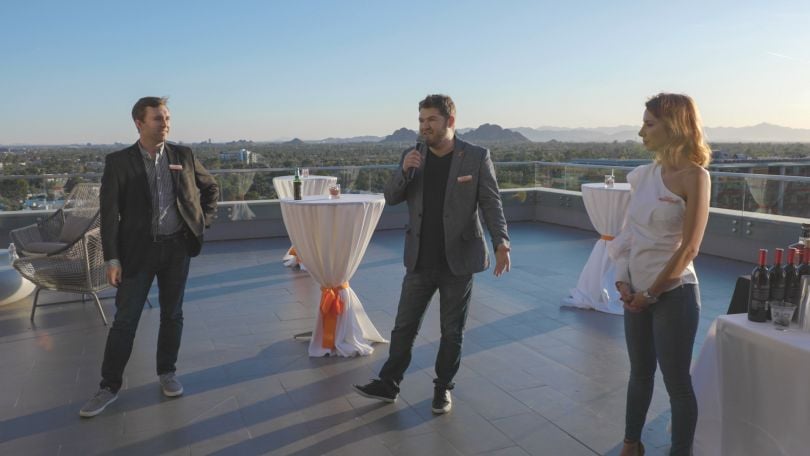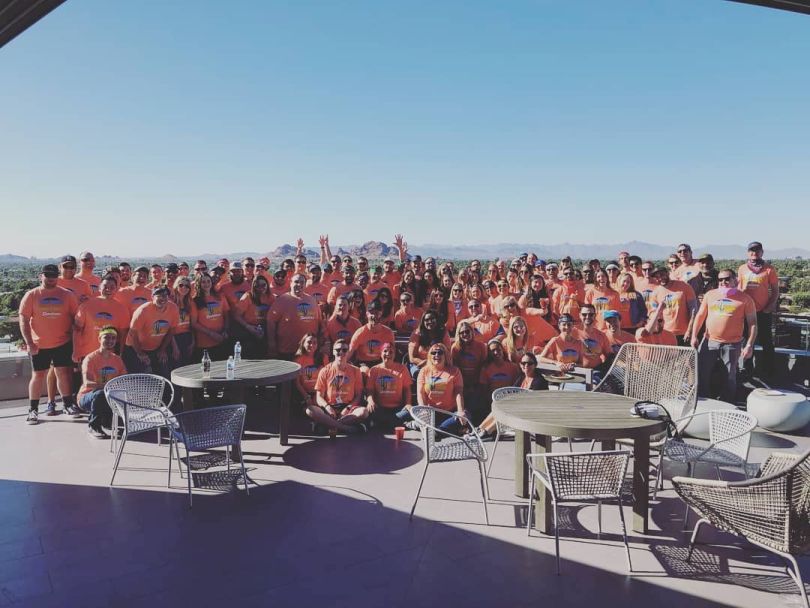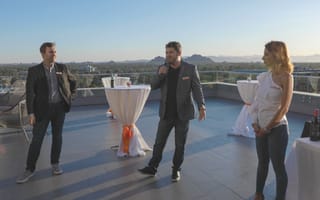When Dan Frohnen and his Sendoso team went to Scottsdale, Arizona, for its first sales event of the year on February 24, COVID-19 was a distant blip on the radar. By the time they returned to the office a week later, however, everything had changed. As cases of coronavirus spread across the United States, the event cancelations started to trickle in. First, SalesLoft announced Rev2020 would become a virtual-only event. Then came another conference shut down in San Francisco, followed by cancelations in Chicago, New York, Boston and San Diego.
How to a Pivot Sales Strategy Built Around Events
- Invest more resources in your SDR team
- Replicate face-to-face experiences with personal touches
- Make use of your event materials with outbound sales packages
- Align outbound strategy with events strategy
Trade shows as large as 20,000 people and meetings as intimate as Sendoso’s CMO thought leadership breakfasts all evaporated from the sales team’s calendar.
“We proactively started thinking ‘What would we do if we had an entire season with no in-person events?’”
 After that first cancelation came in, Frohnen, Sendoso’s chief marketing officer, knew others would follow and that his team would need a new marketing and sales strategy. As a platform that facilitates personalized, non-digital marketing campaigns, those events were part of its brand and played a critical role in its sales strategy.
After that first cancelation came in, Frohnen, Sendoso’s chief marketing officer, knew others would follow and that his team would need a new marketing and sales strategy. As a platform that facilitates personalized, non-digital marketing campaigns, those events were part of its brand and played a critical role in its sales strategy.
“We knew that this was going to be big,” Frohnen said. “So, we proactively started thinking ‘What would we do if we had an entire season with no in-person events?’”
Sendoso’s sales team relied on the face-to-face experiences of those events to fill out a large portion of its accounts pipeline. First, there was the pre-event campaign of gifts and direct mail to drum up interest with targeted accounts. Then there were the valuable in-person meetings during the event, followed by post-show follow-ups.
Sendoso isn’t alone in its reliance on events. On average, marketing teams spend about 25 percent of their budget on events each year, according to event platform Bizzabo’s market research. Now Sendoso, like so many other sales and marketing teams across the U.S., are left trying to figure out a way to replicate those in-person experiences.
We spoke with Frohnen about how Sendoso is adapting its strategy to an event season with no events.

Invest more resources in your SDR team
During Sendoso’s last sales event, a past customer approached Frohnen with a question. He had just changed companies and wanted to know if Sendoso could meet his new company’s security requirements.
Being in person, Frohnen was able to walk the former customer through Sendoso’s security standards. If the two hadn’t been in the same place, that conversation might not have ever happened, but the spontaneous chat allowed the customer to bring up a barrier that a sales rep might not have known was an issue, and it took far less time than scheduling a conversation.
To replicate some of the benefits of serendipitous encounters like these, the marketing team brainstormed 10 different strategies for engaging with customers. Those ranged from virtual lunches and meetings, to using event swag in demand-generation campaigns and guest posting on event websites. But for any of those to work, it required a targeted approach aided by the company’s SDR team.
“If a company is investing in people, then the technology and marketing programs need to be aligned to fueling those people to generate pipeline.”
One of the first things Frohnen did was join an all-hands call with the sales development representative team to align goals. That meant making sure the SDR team had all the information they needed on target accounts, and checking in with them daily on what resources they needed to close a deal.
Aligning the outbound strategy with the events strategy has played a critical role in helping Sendoso make up for the connections events would have provided.
“If a company is investing in people, then the technology and marketing programs need to be aligned with the goal of fueling those people to generate pipeline,” Frohnen said.
Replicating face-to-face experiences with personal touches
Before any outreach, Sendoso’s sales reps spend about five minutes researching their contacts.
They look for whether the person has written any thought leadership posts, what that person is passionate about and even personal tidbits like whether they’re a sports fan or not. All of that information can help the rep put together a more personalized message, Frohnen said.
“Whatever (information) the reps can find helps them so that they’re not just coming in and being super dry.”
Those messages provide a personal starting point and encourage the customer to engage with the materials Sendoso sends to recreate the event experience.
“Whatever (information) the reps can find helps them so that they’re not just coming in and being super dry,” Frohnen said. “It’s more like, ‘Hey, I can provide business value to you, and I want to get to know you as a human while we do that.”

Make use of your event materials with outbound sales packages
Since the marketing team had already produced a trove of conference ammo, from swag to thought leadership webinars geared toward target accounts, the team didn’t want it all to go to waste.
Instead, it found creative ways to distribute that content through its outbound sales strategy.
“We’ll say, ‘While you’re reading that e-book we sent you, enjoy lunch on us.’”
One of the ways they’ve done that is through a gift box Frohnen calls the “Sendoso Experience.” The package includes Sendoso event swag, a customer study and additional thought leadership materials his team planned to present. They’ll often also include a gift for the person to enjoy.
Since people are stuck inside and it can be lonely, Frohnen said they try to give gifts people will find useful. Instead of Starbucks gift cards, those packages now include things like a $25 iTunes gift card to buy a Headspace subscription, or an Uber Eats card to purchase a take-out meal. Each gift comes with a note.
“We’ll say, ‘While you’re reading that e-book we sent you, enjoy lunch on us,’” Frohnen said. “That works really well.”
The company has also written more blog posts and guest entries on event pages to recreate the thought leadership opportunities they would have had at events. Frohnen said sales reps have seen an increased rate in virtual meetings and coffees as a result of those customer engagement efforts.
Still, while the company adapts to its immediate circumstances, the question remains: How much of this will become the new normal? In-person events could become less commonplace as a result of coronavirus, Frohnen said. The strategies the team is trying out now could become the company’s new approach in the future.
But for now, the company is just trying to figure out what business as usual looks like during these unprecedented times.
“The only thing that I can really tell you is that it’s making me question everything, period,” Frohnen said. “This is unprecedented in any of our lifetimes that everyone is fundamentally having to stop, rethink, readjust, not only in their personal life but in their business life right now.”




